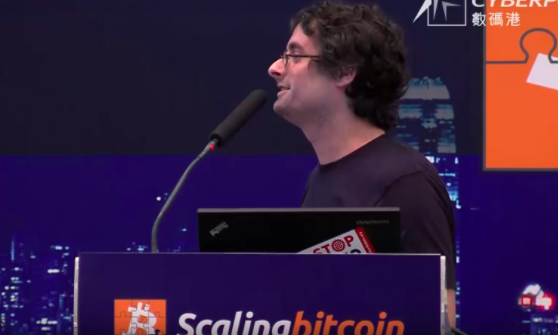[ad_1]
A privateness and scalability improve that might turn into one in every of bitcoin’s largest to this point has handed a few milestones that had been little observed outdoors technical circles.
On Tuesday, Pieter Wuille, a Bitcoin Core contributor and the brains behind the replace often known as Taproot submitted a work-in-progress code change to GitHub in what’s often known as a “pull request,” displaying that the code is prepared for extra developer eyes.
“Merging that is clearly conditional on getting group assist for the proposal. It is opened right here to exhibit the code modifications that it could indicate,” he wrote.
Submitting a pull request to the code for Bitcoin Core (the reference implementation, or normal model of bitcoin software program from which others are derived) doesn’t imply the change is official. Nevertheless it’s a key step. Whereas many within the bitcoin group are excited concerning the improve, the method of turning the concept into code has been principally occurring behind-the-scenes. Wuille’s “pull request” pushes it into the highlight, signifying the code is nearer to prepared.
Although Wuille submitted the pull request simply a few days in the past, a number of bitcoin builders together with John Newberry, Ben Woosley, and Adam Ficsor have already left overview feedback, in one other signal of how extremely anticipated the change is.
In one other key, if extra symbolic milestone, the three Bitcoin Enchancment Proposals (BIP), that are like blueprints of the modifications, have additionally been assigned numbers on GitHub.
A key a part of the proposal is Schnorr, a cryptographic signature scheme for proving possession of cash. It is higher than what bitcoin has proper now in that it paves the best way for scalability enhancements and permits builders to construct new applied sciences on prime of bitcoin.
Utilizing Schnorr, Taproot provides good contract capabilities to bitcoin that may strengthen privateness. For instance, the transactions that open and shut cost channels on the lightning community, permitting speedier transfers of small quantities, wouldn’t look a lot completely different from regular transactions (a minimum of, up to a degree). So it could be tougher for blockchain voyeurs to discern what a person is doing.
As a decentralized cryptocurrency, bitcoin would not have a single chief who can push by modifications. As such, a serious change like this (known as a “delicate fork” in bitcoin) can solely get absorbed if nearly everybody agrees with it.
If nobody locally comes up with any legitimate objections to Taproot (reminiscent of uncovering a safety vulnerability) it may turn into the most important change the digital foreign money has seen since 2017, when scaling improve SegWit was locked in after an extended and sometimes savage debate.
Up to now, it appears just like the change has all however unanimous approval from builders. Bitcoin Core contributor Anthony Cities organized a overview group the place builders scrutinized the BIPs, submitting feedback and options. Any developer who needed to hitch may.
This “military” of builders completed their overview of the protocol change earlier this month. Of these, 16 submitted a “survey” on the finish outlining their suggestions, together with whether or not they suppose the improve is a good suggestion. All 16 authorized of the modifications.
There’s nonetheless lots of work to do. Whereas many scrutinize the code on the lookout for enhancements or errors, some builders are debating one of the simplest ways for the decentralized, international community to undertake the change with as few bumps as doable – which SegWit’s heated debate confirmed is way from a given.
Disclosure Learn Extra
The chief in blockchain information, CoinDesk is a media outlet that strives for the very best journalistic requirements and abides by a strict set of editorial insurance policies. CoinDesk is an unbiased working subsidiary of Digital Forex Group, which invests in cryptocurrencies and blockchain startups.
[ad_2]
Source link

